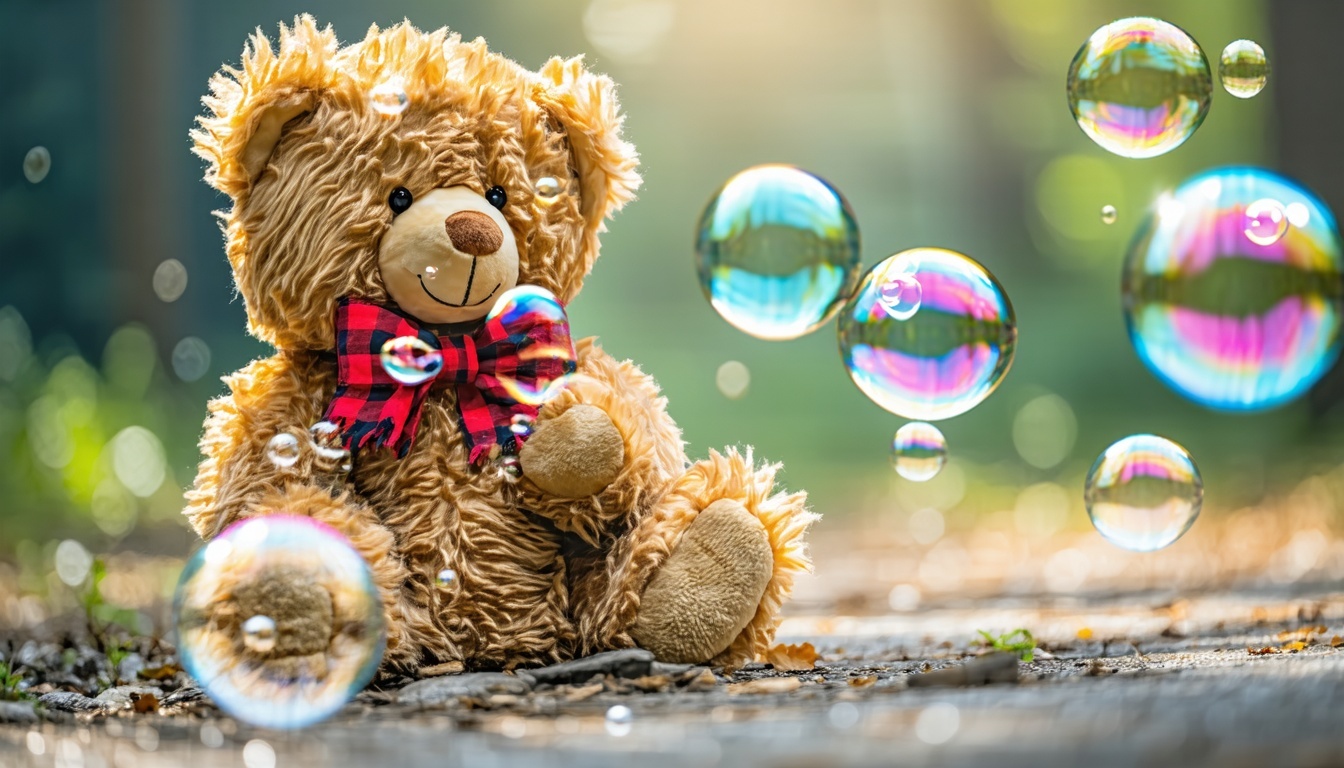
By Melissa Meyer, DNP, PMHNP
Imagine your child on the playground, happily building a sandcastle. Then—BOOM!—another child barrels through their masterpiece like a wrecking ball on roller skates. Cue the tears, the yelling, the frantic calls for “Moooom!”
Sound familiar?
Welcome to the world of emotional safety and boundaries—a topic that may sound big and clinical, but is actually all about giving our kids the tools to feel safe, respected, and confident in their everyday world.
Today, we’re diving into one of my favorite ways to teach this: using Bubbles, Bears, and Boundaries.
It’s part storytelling, part science, part sparkle—and all heart.
🫧 The Bubble: Your Child’s Invisible Force Field
Let’s start with the bubble.
I teach kids that every person has an invisible bubble around them—a magical space that belongs just to them. This “personal bubble” helps them understand the concept of physical and emotional boundaries in a fun, non-threatening way.
🌟 Try it at home:
-
Ask your child to hold out their arms like airplane wings.
-
Say: “This is your bubble! It’s your safe space. No one gets to pop it without your permission.”
-
Take turns stepping forward and asking, “Can I come into your bubble?” Let your child say “yes” or “no.”
This simple game teaches consent, respect, and awareness of personal space. And it works just as well at home as it does in classrooms or playdates.
Bonus tip: You can even decorate a “bubble chart” with stickers to help younger kids remember who they feel safe inviting into their bubble (parents, siblings, best friends) and who might need to stay outside unless invited (new friends, strangers, or big feelings).
🐻 The Bear: Strength, Safety & Speaking Up
Next up: the bear. Not the scary kind, don’t worry—we’re talking about the brave, strong, protective kind.
I ask kids to picture their inner bear—a strong, wise animal who helps them know when something feels safe… and when something doesn’t.
Your child’s bear might growl softly when someone gets too close without asking. Or it might gently step back when a hug doesn’t feel right. This bear isn’t about aggression—it’s about self-protection and instinct.
🐾 Try this together:
Ask your child:
-
“If your bear could talk, what would it say when something doesn’t feel okay?”
-
“What does your bear do when it wants space?”
Let them draw their bear, name it, or act out bear responses with stuffed animals. This creates a gentle language for discussing discomfort, fear, or even bullying—without shame or confusion.
And if your child is shy about speaking up? Remind them: “Your bear has your back.”
🚧 Boundaries: What They Are and How to Practice Them
Now that we’ve covered the bubble and the bear, it’s time to bring it all together with boundaries.
Boundaries are the rules we set about how we want to be treated—physically, emotionally, and even digitally. And yes, kids can start learning them early.
The key is to:
-
Model boundaries in your own behavior (“I need 5 minutes of quiet time, and then I’ll come play.”)
-
Respect your child’s boundaries when they say “No thanks” to hugs or tickles
-
Practice “stop” and “go” language so they feel empowered to express their comfort level
🔄 Role-play idea:
Set up a “Boundary Bear Game.” You act as someone entering their bubble, and they get to say:
-
“Stop, please.”
-
“That’s too close.”
-
“I don’t like that.”
Then switch roles and let them practice hearing and respecting your boundaries. It’s a win-win for empathy and empowerment!
🌈 Why Emotional Safety Matters (and How It Builds Resilience)
When children learn about boundaries, they also learn:
-
They have a right to feel safe
-
Their voice matters
-
They can say no, ask for help, and trust their gut
And here’s the magical part: boundaries don’t shrink relationships. They make them stronger.
When a child trusts they’ll be listened to, they become braver, kinder, and more connected. Emotional safety creates a space where they can grow—not just survive, but thrive.
💖 A Note from Melissa
I know how easy it is to doubt yourself as a parent.
You wonder:
-
Am I being too strict?
-
Too soft?
-
Too much?
But just by reading this, you’re showing up. You’re learning. You’re helping your child feel strong, safe, and seen.
So here’s your reminder: boundaries aren’t walls. They’re doors—with locks that your child learns to manage with confidence and care.
Keep practicing, keep playing, and keep believing in your child’s inner bear and bubbly heart.
You’re doing better than you think.
And we’re right here with you, every step of the way. 🐻🫧
📌 Try it today:
Draw your family’s bubbles together and decorate them with glitter, stars, or stickers. Then role-play how your bear would respond to feeling crowded, scared, or uncomfortable.
Tag @HazelwoodMentalHealth with your Bubble Bear drawings and use the hashtag #SafeAndSparkly to join our parenting community!
